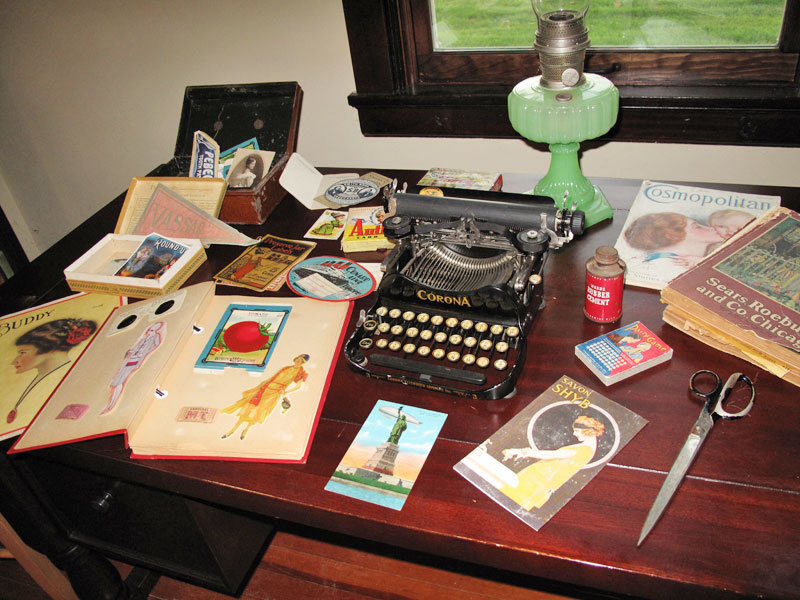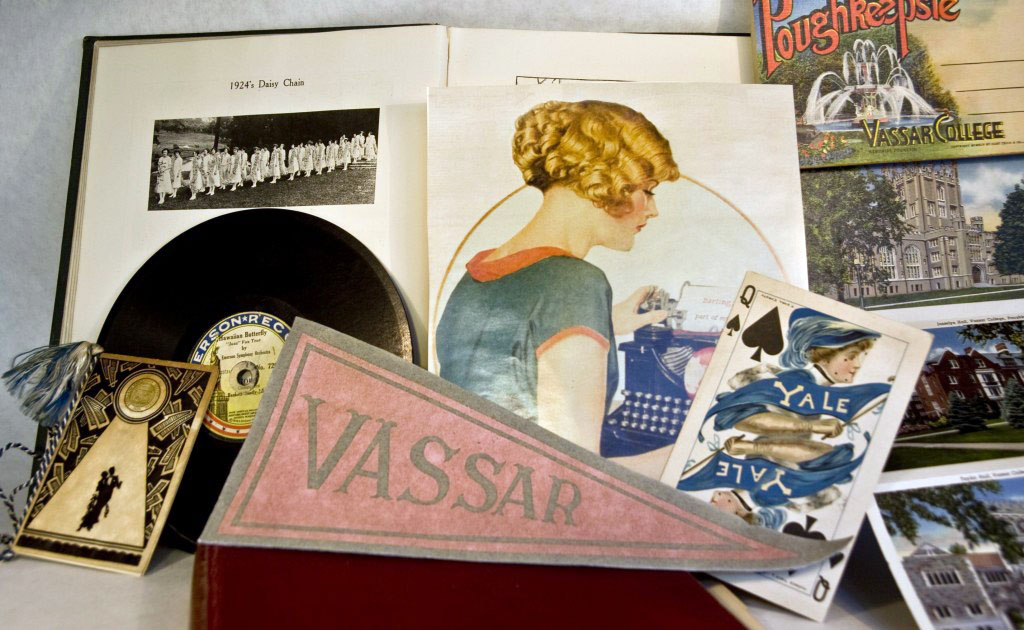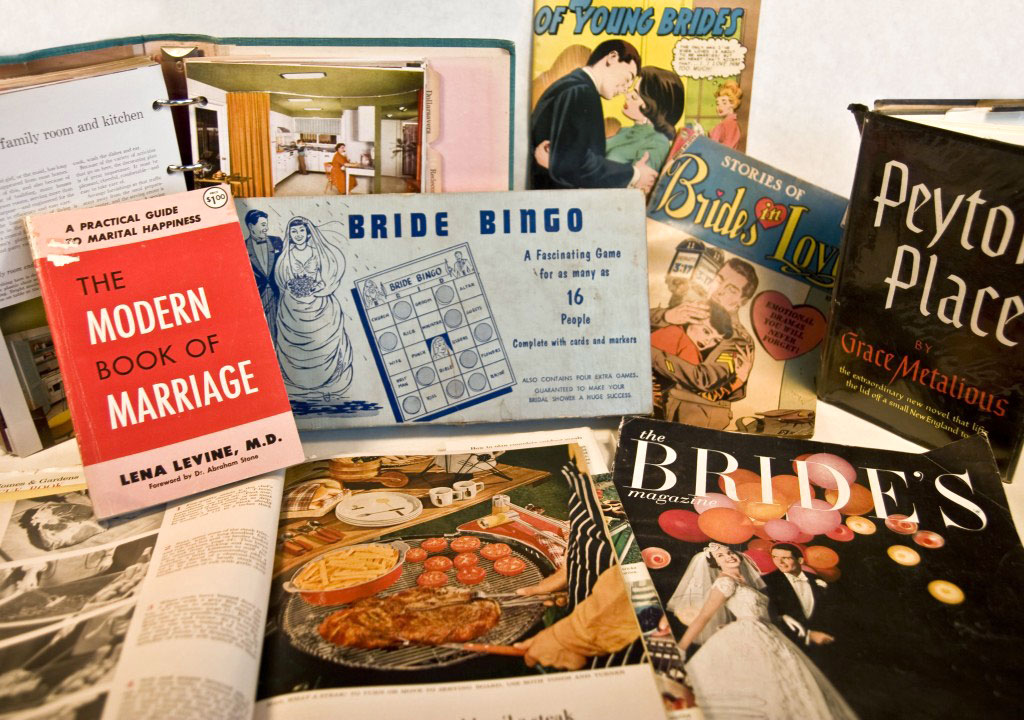Archivist Turned Novelist
NP: Do you have a favorite piece of ephemera in the book?
CP: I have a lot of favorites. All of it is so irresistible to me. I collect old card games, so I really like the fortune telling cards sprinkled throughout the book at little junctures. In the Vassar chapter, I like the advertising fan—Pur-ox Syrup with the four figures on it. In the New York chapter, I like the original Coney Island tickets. I love all the different rides on them. For the Cunard chapter, that third-class menu is pretty great because the food is so disgusting—I could never make that up! And then I really like those Lindbergh badges that were given out in the streets of Paris—I think they’re really amazing. I love all the Horn & Hardart stuff, like the automat spoon. I also love those eclipse glasses—they handed them out for free in drugstores and they had little pieces of film so you could, in theory, look at the sun during an eclipse and it’d be perfectly safe for your eyes.
NP: How about that nude photograph of Frankie toward the beginning of the book?
CP: That’s an interesting picture, isn’t it? I bought that so long ago—this artistic nude that I bought in Providence in the 1970s when I was in graduate school. It’s a real five by seven photograph and it’s probably of that period. I just happened to come across it again and I thought, well, that’s kind of interesting—can I work it into the book? And I think I did! Her rear end is bare in the photograph, but I covered that up with the caption. It’s funny because some people ask, “Oh, is that you?” and I say, “No, that’s not me!”
NP: Do you have any stories of great finds while you were assembling The Scrapbook?
CP: I found one store that was really incredible: Whiting’s Old Paper in Mechanicsville, Virginia. It’s a paper ephemera store run by this man named John Whiting. He’s been business for at least forty years and has over a million pieces of ephemera. In his store, there are floor-to-ceiling shelves with little boxes that contain matchbook covers, postcards, playing cards, and so on. Along with that, there are just piles and piles of vintage magazines, postcards, and scrapbooks. You really had to just literally crawl on your hands and knees around the place. I went there several times, and I spent hours there each time I went because there’s just that much stuff to look through.
Then there’s Charlottesville Office Machine Co. where Ted Wood sells and restores vintage typewriters and that’s all he does. He once ran a typewriter store on the main street, but of course, since people don’t have typewriters anymore, his store reduced and reduced in size so now it’s this tiny little store in an office park. But he has all these beautiful old typewriters from the 1920s and ’30s, all restored. And of course he’ll also restore anything you bring in, give you the right ribbon and so on.
Both of them have a passion and have a very eccentric store and are out of the way, but people know where they are and can find them.
NP: When formulating the story was their any piece of ephemera you really wanted to include but could not find?
CP: Off hand, I don’t think there was. A lot of times it took me some tracking down but I eventually found things. For example the book cover for To the Lighthouse took some doing but I found it. I suppose there are things that if I found I would’ve included, but I found an amazing amount of stuff that were very specific. An example of something that was odd was the blank Carte Pneumatique Fermee from Paris on page 167. For a while, the whole Paris post service was based on sending these little pneumatic letters around, and I wanted to find a blank one so I could type on it. So I just kept at it until I found one. Quite honestly, though, I’d direct the story from the things that I found. Another odd one is prescription form for liquor (you could get a prescription for liquor during Prohibition). So I wanted to find a blank one that I could to fill out. And once again I had to search for it—it’s the kind of thing you find on eBay or some 1922 yearbook. I was looking for some odd and specific things, and I learned that if you’re persistent and keep looking you will find it. It just might take a little time.












